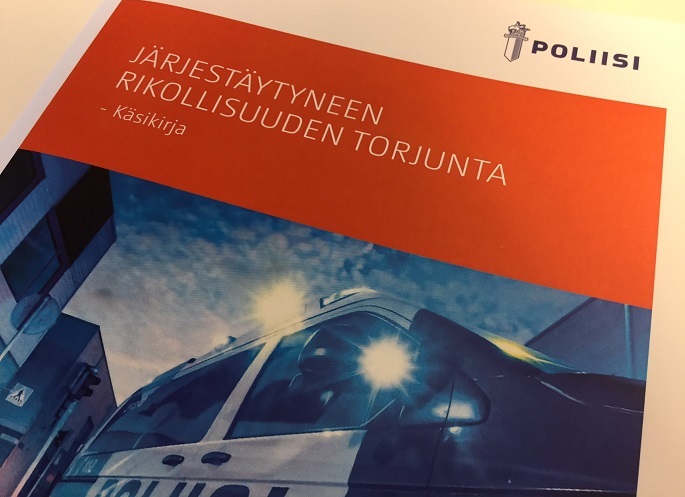Threat of organised crime growing in Europe
New Int´l gangs extend activities to Finland: Police
Published : 03 Apr 2019, 02:32
Serious organised crime in Finland will increase in volume, and become tougher and more international in the near future, according to the police assessment.
In 2000, there were only three established, organised criminal organisations carrying special insignias and eight branches. Now there are seven organisations and as many as 75 branches, and the trend seems to continue, said a press release issued by National Police Board on Tuesday.
According to the latest threat assessment, organised crime is on the increase in Europe.
Internationalisation is one reason for the growth of organised crime. Criminal groups already established in Finland strive to expand and secure their operations. In addition, new criminal groups arriving from other countries try to find a foothold here and bring with them a more violent criminal culture.
New, international gangs that are working on extending their operations to Finland include No Surrender from Holland, Shark Rider MC from Thailand and RMI from Russia.
“RMI (Russian Motorcyclists International) is a branch of the Night Wolves that has landed in Finland. In Finland, they are members of RMI, not Night Wolves. The arrival of RMI is part of the trend in Europe. The group is also expanding to Switzerland, Austria, Germany, France, Romania and Canada”, said Detective Superintendent Christer Ahlgren from the National Bureau of Investigation.
“RMI is not settled in any particular location in Finland; rather, the ten or so members stay in their home towns and cities in Southern Finland. It is likely that RMI is looking to establish and expand its activities”, Detective Superintendent Ahlgren said.
Internationally operating criminal organisations use people that have come here from the same countries as their members who are familiar with the country and customs. Networking is the key, said Ahlgren.
With the arrival and expansion of new groups carrying special insignia, tougher competition feared for territories between criminal gangs.
“According to our assessment, this will cause threats, extortion, tension and violence, and tougher activities in general. On the field, we already confiscate firearms almost daily, and we find more firearms during house searches. For example, last year, the police confiscated 80 illegal firearms from members of just one criminal organisation, including several automatic firearms”, said Ahlgren.
As they expand, gangs seek to establish branches in areas that are particularly useful in terms of criminal logistics.
“The role of business operations in crime is becoming more important. Almost every member of a criminal gang runs a business; some of them run more than one. They try to hide or circulate criminal proceeds through dummy buyers. Criminal organisations are actively involved in the construction, security and restaurant and nightclub businesses, for example. Their aim is to network and increase their business operations efficiently and mix legal and illegal money”, Ahlgren explained.
According to Heikki Lausmaa, Chief Superintendent and head of crime prevention at the National Police Board, in addition to the more traditional criminal investigation and intelligence, projects aimed at restricting the operating conditions of organised crime are under way.
“The objective of preventing administrative organised crime is to make sure, through close cooperation between authorities, that organised crime is not able to utilise the legal structures of society”, he said.
According to the latest threat assessment, organised crime is on the increase in Europe. The number of identified groups is growing fast. From 2012 to 2017, the number grew from 3,600 to more than 5,000 groups, an increase of nearly 40%. According to preliminary information, the trend continues this year.


